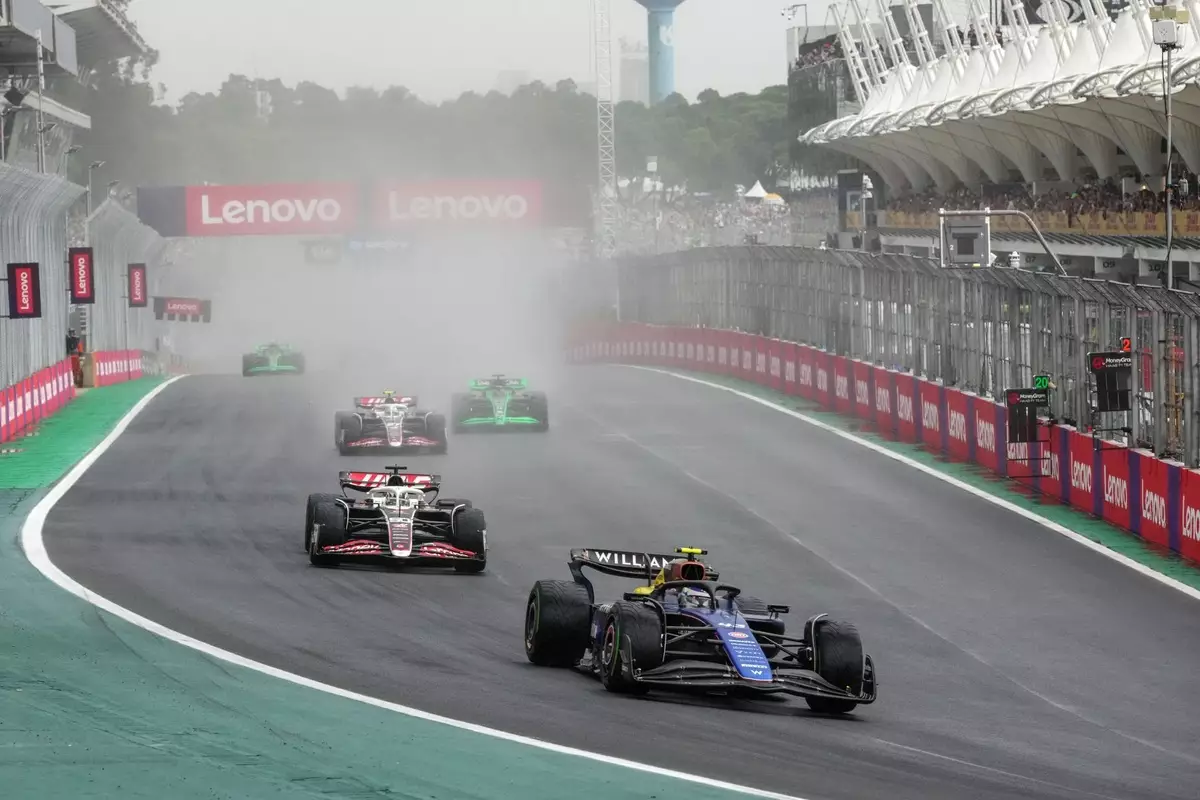The Challenge of Wet Conditions: Insights from the Brazilian GP
There’s something truly electrifying about Formula 1 racing. The roar of the engines, the vibrant atmosphere, and the sheer unpredictability of each race make it a spectacle like no other. The Brazilian Grand Prix, with its notorious weather and passionate fans, often takes this unpredictability to new heights. This year, rain added an extra layer of complexity, especially for the rookie drivers who found themselves navigating treacherous wet conditions. Let’s dive into their experiences and explore what unfolded on the rain-soaked track.
As someone who has grown up watching F1 races, I understand the adrenaline rush that comes with each lap. But witnessing these young drivers tackle the Brazilian Grand Prix was a whole new level of excitement. It’s not just about speed; it’s about skill, strategy, and sometimes sheer grit to make it through. For rookies in particular, dealing with slick surfaces and limited visibility must have felt like learning to swim during a storm. Their journey through this race was both challenging and enlightening.
Key Takeaways
- Navigating wet conditions is a formidable challenge for rookie drivers.
- Experience in similar conditions can be beneficial but not foolproof.
- High-stakes racing under rain requires adaptability and resilience.
The Rookies Face the Storm
Liam Lawson entered the Brazilian GP with some experience in wet conditions from his debut at the 2023 Dutch Grand Prix. However, nothing could fully prepare him for the unpredictable nature of Brazil’s weather. The track was an unforgiving place where even seasoned drivers struggled to maintain control. Several crashes during qualifying set a chaotic tone for the weekend, highlighting just how tough these conditions were for everyone involved, particularly those still finding their footing in F1.

Despite these challenges, Lawson’s performance was commendable. During qualifying, he managed to secure an impressive fifth place on the grid—a testament to his growing skills and determination. But as we know, qualifying is just one part of the race weekend. The real test comes when it’s time to line up on Sunday with rain threatening to turn every corner into a potential hazard. For rookie drivers like Lawson, each lap was a learning opportunity wrapped in pressure and unpredictability.
Race Day Challenges
Race day brought with it even heavier rain than anticipated. As cars lined up on the grid, nerves were palpable. Oliver Bearman faced an early spin after colliding with Franco Colapinto—a moment that would earn him a penalty and set the tone for his tumultuous race. Wet-weather racing is notoriously unforgiving; Bearman’s subsequent dramatic 360-degree spin underscored just how tricky navigating these conditions can be for newcomers still adjusting to F1’s demands.
Franco Colapinto’s race ended prematurely as safety concerns grew due to worsening conditions. This incident served as a stark reminder of how precarious things can get on wet asphalt. It was also a wake-up call for rookies about the critical importance of quick adaptation in such scenarios. The ability to anticipate changes and adjust strategies on-the-fly is essential—not just for success but sometimes merely to survive until the finish line.
Team Dynamics Under Pressure
The pressure wasn’t solely on the drivers; team personnel also worked tirelessly behind the scenes to guide their young racers through turbulent waters. Bearman stood in for Kevin Magnussen under less-than-ideal circumstances, battling both personal disappointment and external challenges as he struggled to keep pace consistently throughout his stint behind the wheel—the hallmark difficulty many rookies face when thrust into high-pressure environments.
Ayao Komatsu from Haas pinpointed Bearman’s struggles as a combination of inexperience and dealing with a car not optimized for wet tracks like Brazil’s challenging circuit layout created environment rife potential mishaps mistakes alike underscoring composure invaluable trait must cultivate amidst chaos surrounding every corner lap completed without incident considered small victory itself teams paddock shared sense camaraderie supporting fledgling drivers pivotal moments coping adversity learning curve steep but essential part growth process within sport demands constant evolution adaptation thrive succeed long-term horizons future endeavors await promising talents honing craft relentless pursuit excellence
Final Thoughts
The Brazilian GP offered more than just thrilling action—it provided invaluable lessons for all involved especially rookies whose experiences amidst rain laid groundwork future successes failures alike shaping careers ahead while podium finishes seem distant dreams now foundation built during events like these critical stepping stones journey mastery Formula quest requires resilience adaptability above else emerging from shadows grey skies seen race weekend brighter thanks newfound understanding gained through trials tribulations faced along way
As season unfolds continues challenge rookie drivers will carry lessons learned Brazilian GP forward each race opportunity further unlock potential remind us even toughest conditions brightest futures await those willing embrace uncertainty head-on determined succeed spite odds stacked against them
Formula 1 Brazilian Grand Prix wet-weather racing rookie drivers motorsport challenges


Leave a Reply